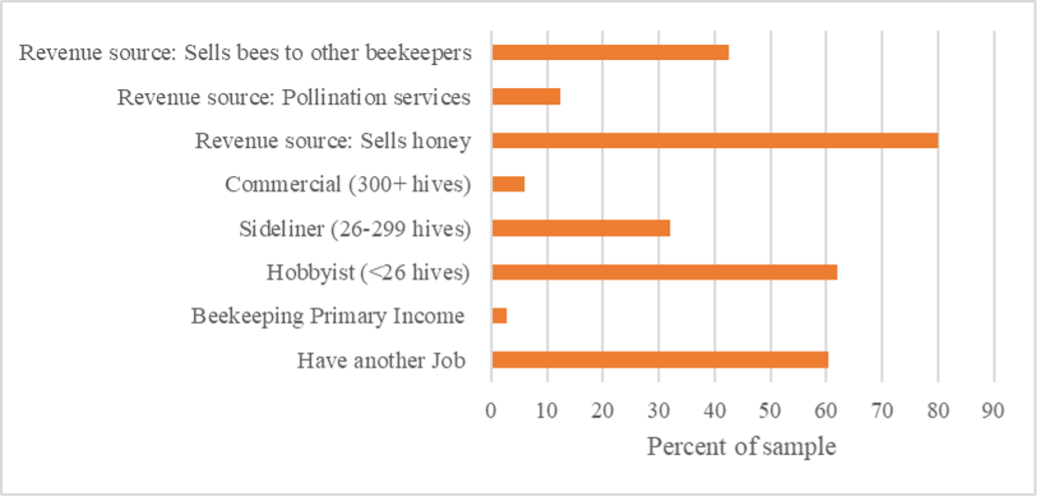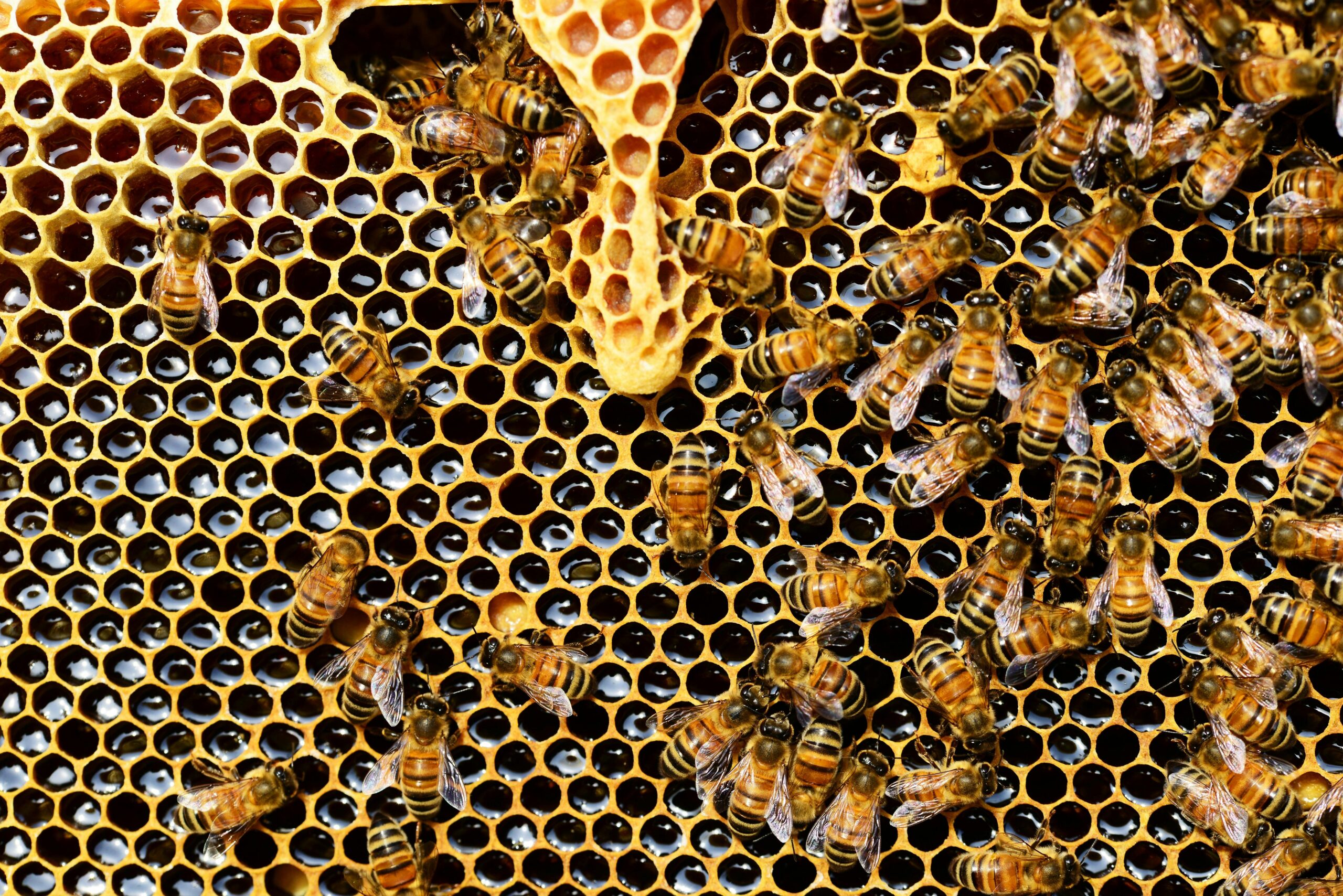Beekeepers provide valuable services to the population and agricultural community in Southern states. Many beekeepers produce honey, which they sell to retailers or directly to consumers. In addition, many specialty crops grown in the South rely on pollinators – both wild pollinators and those managed by beekeepers – to produce fruit and seeds. Blueberries and watermelon in particular are entirely dependent on insect pollinators, and other crops such as avocados, oranges, strawberries, and tomatoes are moderately dependent on insect pollinators (Mallinger et al. 2021). Reflecting this dependence, the largest number of acres that farmers pay to have pollinated in many Southern states is blueberries, followed by watermelon (USDA 2023).
Given the importance of beekeepers to Southern consumers and to farmers, we conducted an electronic survey of 150 Alabama beekeepers. Our response represented about 12% of the registered beekeepers in Alabama. Alabama has fewer honeybee colonies and lower honey production than Florida or Georgia, but comparable to South Carolina (USDA 2024). Despite the lower total production, Alabama honey yield per colony is higher than other Southern states except for South Carolina (USDA 2024). Alabama also had the highest honey price per pound of all the states in the Southern region in 2023 (USDA 2024).
Figure 1 describes the operation size and revenue sources for the surveyed beekeepers. Almost all of the beekeepers sold honey (80%), and many beekeepers sold bees to other beekeepers (42.6%). Very few beekeepers provided pollination services (12%). The most immediate potential for revenue growth among beekeepers thus consists of improving the marketing potential of honey. For farmers in specific regions, it may also be difficult to find a beekeeper that provides pollination services.
The majority of our sample (62%) were “hobbyist” beekeepers with small numbers of hives, and only 6% of our sample were large commercial beekeepers. Farmers looking for pollination services would thus need to find the few beekeepers who have enough capacity to pollinate the required number of acres. Alternatively, farmers may wish to contract with many different hobbyist beekeepers either individually or through a cooperative of hobbyist beekeepers.
Of the sampled beekeepers who did provide pollination services, 72.2% only offered them within Alabama, while 27.8% offered them both within Alabama and in other states (Florida, Georgia, and California). Reflecting the fact that most of the beekeepers were hobbyists, when asked about barriers to providing pollination services, those that did not offer these services cited a lack of time, resources, and the fact that their operations were too small. Respondents also cited barriers to expanding honey production, which also included a lack of time, as well as difficulty identifying new markets and competing with mass-produced honey that may be mixed with non-honey sweeteners.
Given the presence of hobbyist beekeepers in Alabama, facilitating coordination between smaller beekeepers will be essential to improving beekeeper revenue from honey as well as providing pollination services. Beekeepers associations may help connect farmers with beekeepers with the capacity to provide pollination services. Hobbyist beekeepers may also find it beneficial to organize into cooperatives that either provide pollination services or coordinate marketing efforts of local honey. Such cooperatives may have the collective capacity that an individual beekeeper lacks to identify new honey markets or provide consumer education on honey. At the extreme, a state- or region-specific honey marketing board may further improve marketing coordination between large numbers of smaller beekeepers.
Figure 1: Characteristics of a sample of 150 Alabama beekeepers

Sources:
Mallinger, Rachel E., John J. Ternest, Sarah A. Weaver, James Weaver, and Samantha Pryer. 2021. Importance of insect pollinators for Florida agriculture: A systematic review of the literature. Florida Entomologist 104(3): 222-229.
United States Department of Agriculture, National Agricultural Statistics Service. Cost of Pollination, December 15, 2023.
United States Department of Agriculture, National Agricultural Statistics Service. Southern Region News Release Honey, March 15, 2024.
Scarbrough, Lawson, and Joel Cuffey. “Beekeeping Operations and Revenue Sources in Alabama.” Southern Ag Today 4(38.5). September 20, 2024. Permalink

